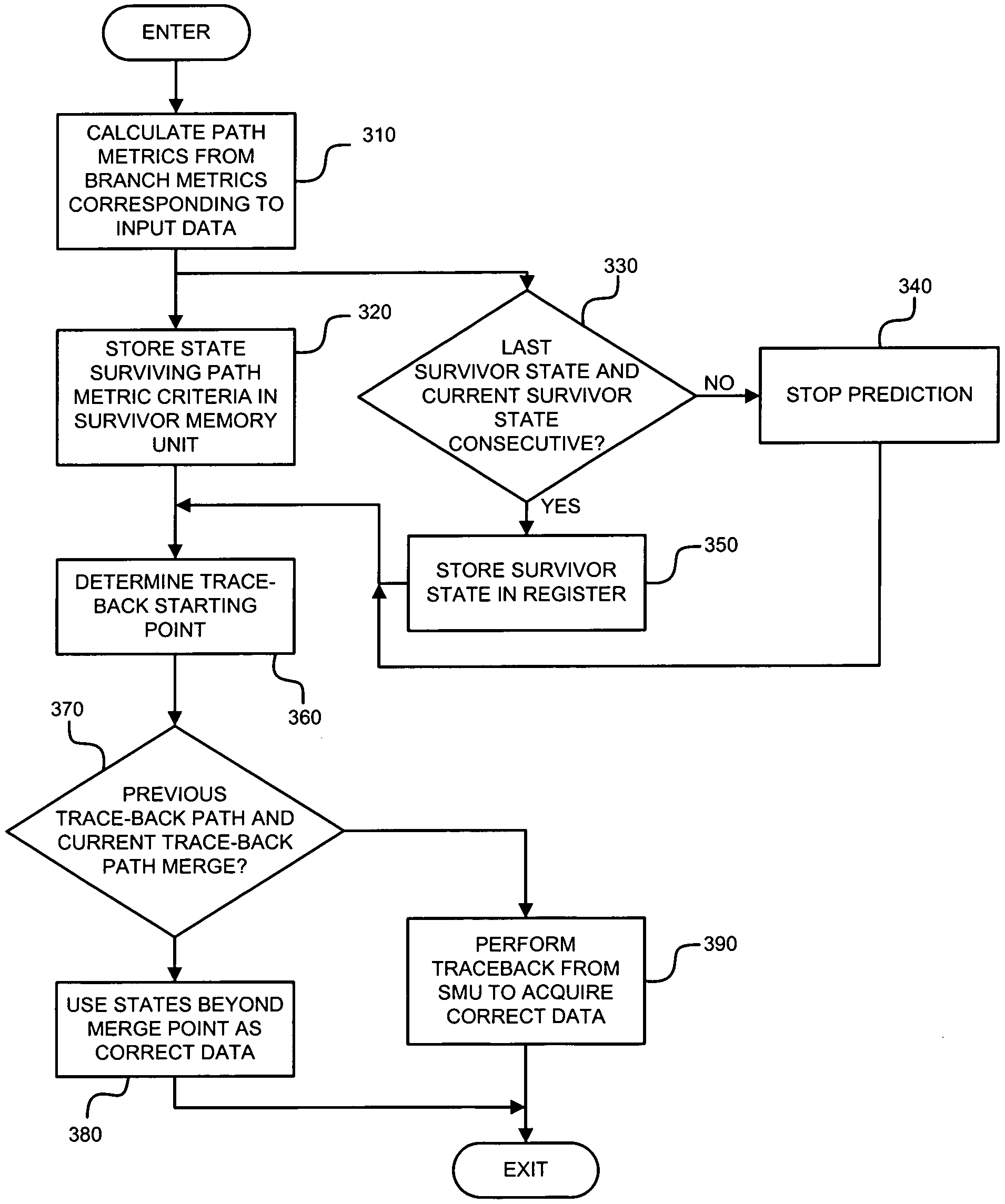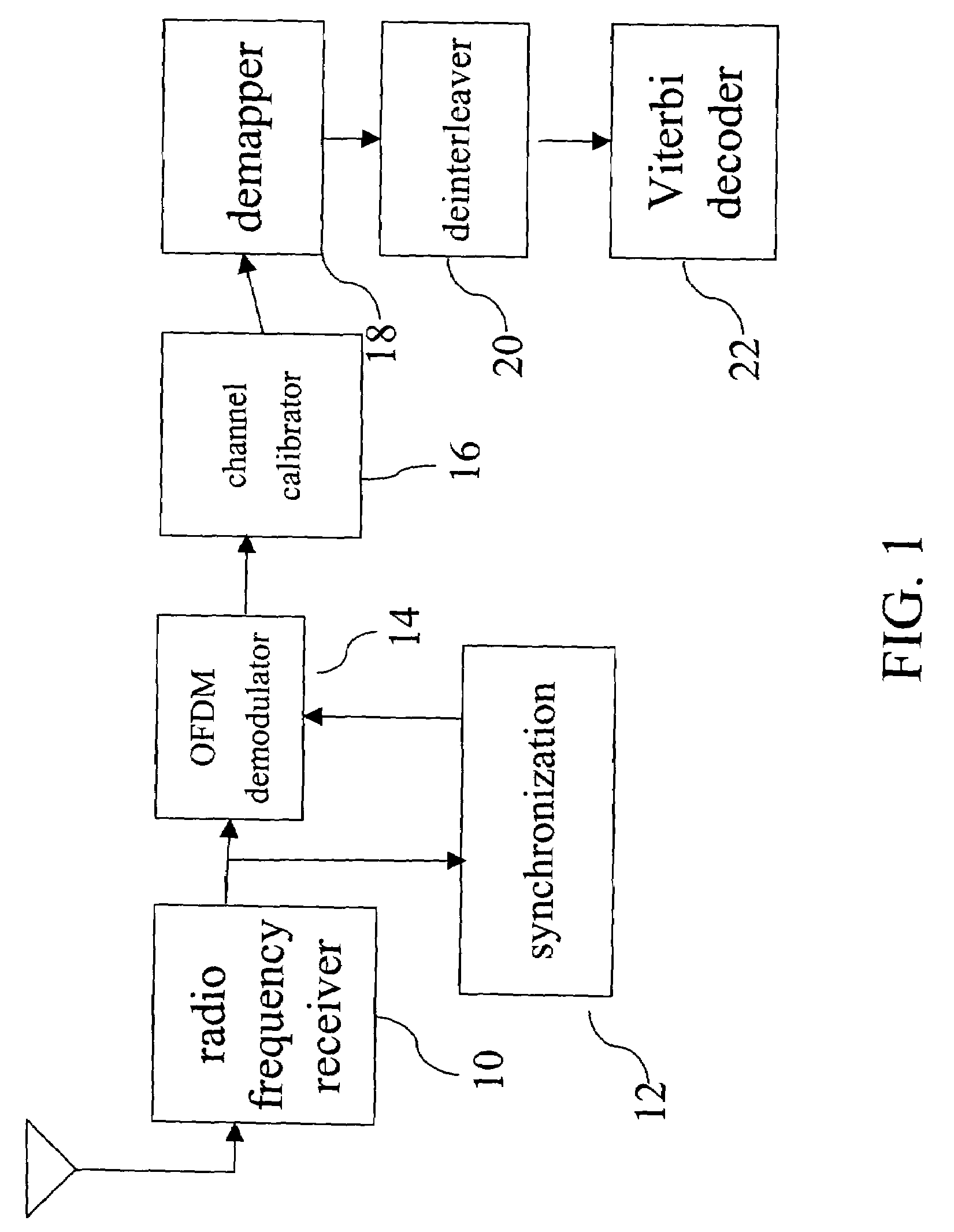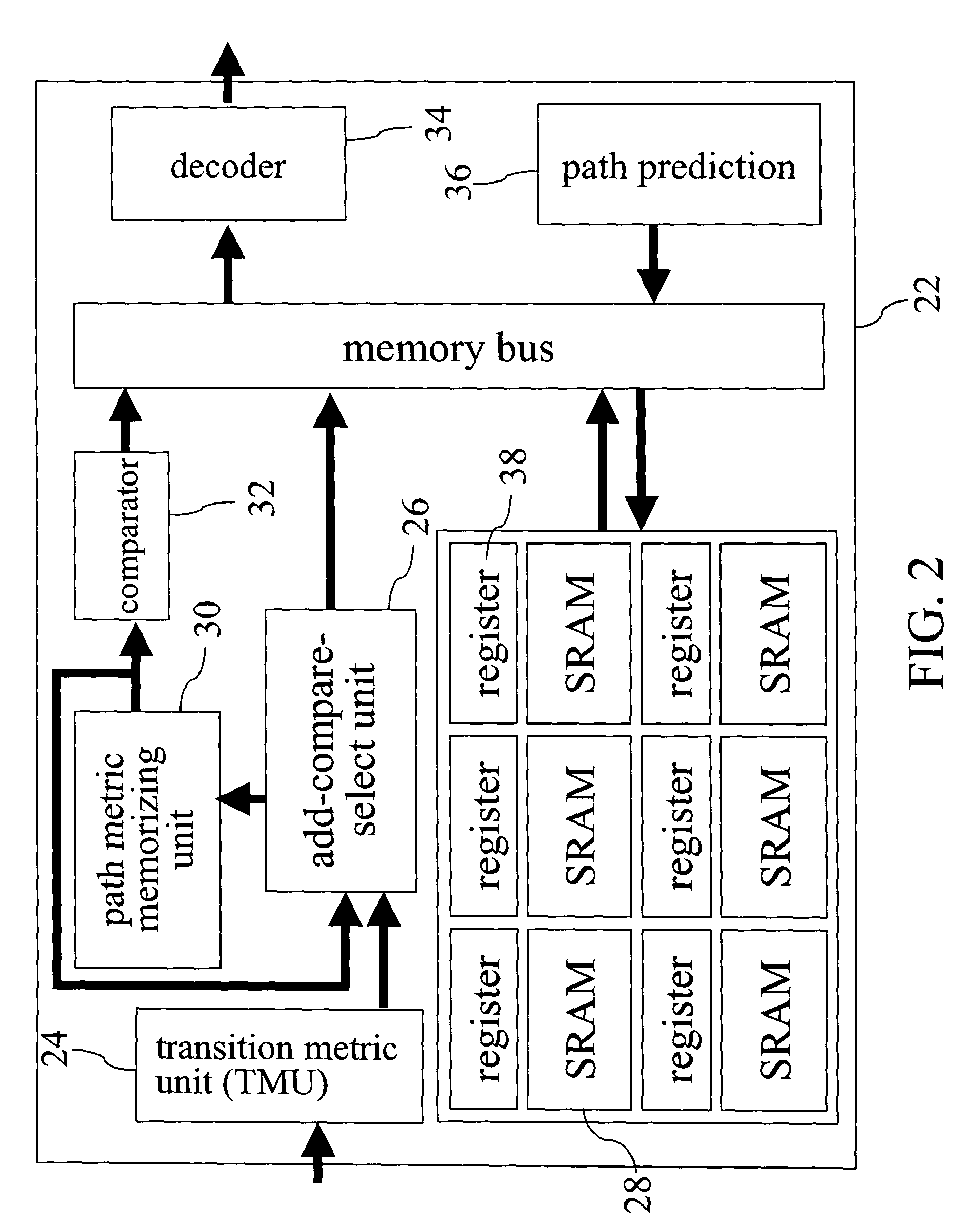Algorithm for a memory-based Viterbi decoder
a memory-based viterbi and encoder technology, applied in the direction of coding, code conversion, electrical equipment, etc., can solve the problems of large amount of memory bandwidth, difficult to achieve low power consumption, waste of a lot of power during memory access, etc., to reduce the number of memory access operations and reduce power consumption
- Summary
- Abstract
- Description
- Claims
- Application Information
AI Technical Summary
Benefits of technology
Problems solved by technology
Method used
Image
Examples
Embodiment Construction
[0021]The path trace-back method is suitable for the Viterbi decoder with a large number of states but low power consumption. However, as the demand for higher decoding speed increases, the demand for memory access bandwidth will become greater, which in turn will increase the power consumption associated with the memory access. In addition, the similarity between two consecutive trace-back paths will become higher as the data error rate goes down. In real application, when the bit error rate (BER) of the inputted data is around 102, ninety-five percent of the trace-back paths will be similar. For this reason, the invention applies the above-mentioned properties as well as the mechanisms of path matching and path prediction so that up to seventy-five percent of the number of memory read operations can be eliminated, thereby reducing the power consumption.
[0022]FIG. 1 is a schematic diagram showing the Viterbi decoder is applied to an IEEE 802.11a wireless local area network. As show...
PUM
 Login to View More
Login to View More Abstract
Description
Claims
Application Information
 Login to View More
Login to View More - R&D
- Intellectual Property
- Life Sciences
- Materials
- Tech Scout
- Unparalleled Data Quality
- Higher Quality Content
- 60% Fewer Hallucinations
Browse by: Latest US Patents, China's latest patents, Technical Efficacy Thesaurus, Application Domain, Technology Topic, Popular Technical Reports.
© 2025 PatSnap. All rights reserved.Legal|Privacy policy|Modern Slavery Act Transparency Statement|Sitemap|About US| Contact US: help@patsnap.com



